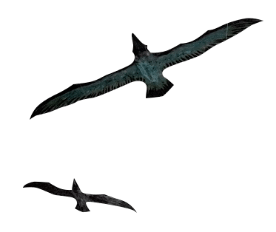Tableau Kadeau
Marie-Louise Munkegaard (b. 1980)
Photographs for Kadeau (2014–2022)
Digital print. Private collection
Gilles Drapes
Photographs for Kadeau (2023)
Digital print. Private collection
Søren Reed
Photographs for Kadeau (2024)
Digital print. Private collection
Tableware for the restaurant Kadeau (2023)
Designer and producer: Lov i Listed
Thrown and glazed stoneware, metal and wood. Restaurant Kadeau, Bornholm
Herringbone-glass (2020s)
The Kadeau glassware collection
Producer: Baltic Sea Glass
Mould-blown glassware. Restaurant Kadeau, Bornholm
Various items for the restaurant Kadeau
Woven basket. Cutlery. Ocean quahog and Iceland scallop for serving food. Napkin
Restaurant Kadeau, Bornholm
Tablå Maaemo / Tableau maaemo
Burke Museum (UWBM Malacology). These shells are Northern quahog Mercenaria mercenaria, False jingle Pododesmus macrochisma, and Calico scallop Argopecten gibbus.
Stamp NK 1930–1931: Nordic Food Culture
Langoustine on spruce branches, Maaemo (2016)
Designer: Kristin Granli. Photo: Mette Randem
Posten Bring A/S. Private collection.
Anders Husa (b. 1984)
Photographs, Maaemo (2015)
Digital print. Private collection
Lars Petter Pettersen (b. 1977)
Photographs, Maaemo (2017)
Digital print. Private collection
Danny Larsen (b. 1981)
Thor and the Jötnar (2015)
Drawing. Maaemo, Oslo
Armchair
CH 20 (1956)
Design: Hans J. Wegner. Producer: Carl Hansen & Søn
This chair: New production. Oak with leather seat. Maaemo, Oslo
Cutlery
Kristin cutlery (1994)
Design: Odd Leikvoll. Producer: Hardanger Bestikk.
Recent
Stainless steel 18/10. Maaemo, Oslo
Table top from Chef’s Table (2015)
Marble. Maaemo, Oslo
Kettle
Copper. Maaemo, Oslo
Wooden dish
Turned wood. Maaemo, Oslo
Knife
Maaemo, Oslo
Wooden spoons and knives (2010s)
Designer and producer: Brynjulf Hammer Krogstrand
Wooden cutlery, knives with reindeer antler handles. Maaemo, Oslo
Glass dish
Smiley
Producer: Eva Solo. Recent
Glass. Maaemo, Oslo
Anne Udnes (b. 1958)
Plate (2015)
Thrown and glazed stoneware with texture, different glazes.
Maaemo, Oslo
Deep plate (2015)
Thrown and glazed stoneware. Maaemo, Oslo
Large vase (2010s)
Handbuildt stoneware and porcelain. Maaemo, Oslo
Egg, small vase (2010s)
Modeled stoneware. Maaemo, Oslo


